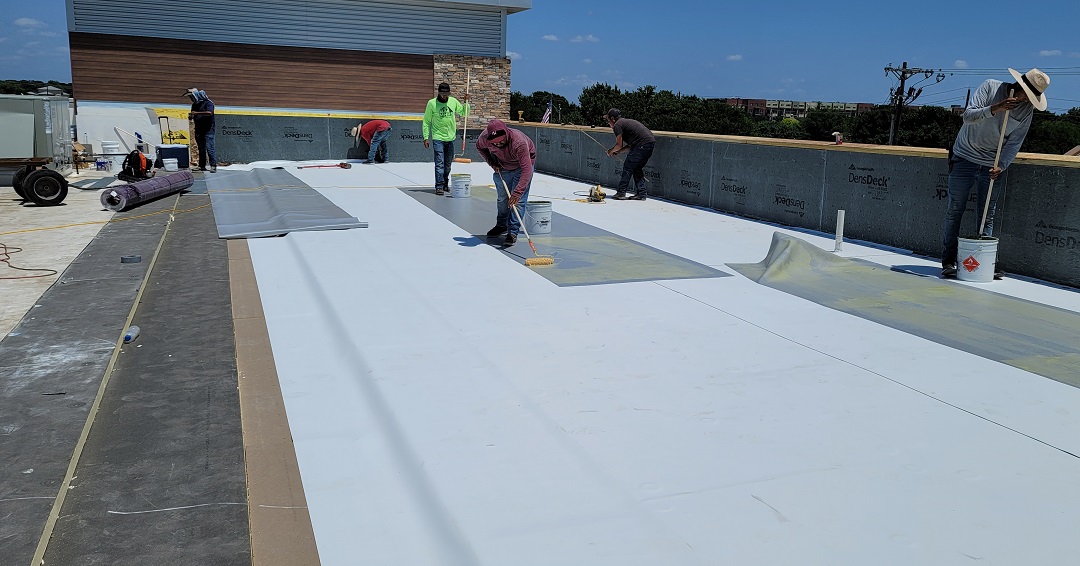
In the quest for more sustainable and efficient building materials, the roofing industry has seen significant innovation, leading to the emergence of Thermoplastic Polyolefin (TPO) as a frontrunner. TPO roofing combines durability, cost-effectiveness, and environmental friendliness, making it an attractive option for commercial and residential buildings alike. This article aims to shed light on what TPO roofing is, its benefits, and why it might be the ideal choice for your next roofing project.
What is TPO Roofing?
Thermoplastic Polyolefin (TPO) roofing is a single-ply roofing membrane that has gained popularity for covering flat and low-slope buildings. Introduced in the early 1990s, TPO is made from a blend of polypropylene and ethylene-propylene rubber, giving it a unique balance of flexibility, durability, and resistance to environmental factors. This roofing material is known for its white, reflective surface, which significantly reduces cooling costs by reflecting UV rays rather than absorbing them.
TPO membranes are typically installed in large sheets that are either mechanically attached to the roof deck or fully adhered with adhesive. The seams between sheets are welded together using heat, creating a continuous, watertight surface that protects buildings from water infiltration and damage. This method of installation not only ensures a robust bond but also contributes to the material’s overall weather-resistant properties, making TPO an excellent choice for areas prone to extreme weather areas.
Components and Installation of TPO Roofing
TPO roofing systems consist of large, lightweight sheets that are made from a blend of thermoplastic and rubber compounds, providing both flexibility and strength. These sheets typically range in thickness from 45 to 80 mils, with the thicker membranes offering greater durability and longevity. The installation process involves rolling out the TPO sheets across the roof deck, securing them either through mechanical fastening or with adhesive, and then welding the seams together with hot air to create a watertight seal.
Professional installation is crucial for maximizing the performance and lifespan of a TPO roof. The process requires specialized equipment and expertise, particularly in welding the seams correctly to prevent leaks. The roof’s structure, including its slope and potential for ponding water, must be considered to ensure proper drainage and to avoid water accumulation that could compromise the roof’s integrity.

Advantages of TPO Roofing
Energy Efficiency: TPO’s white reflective surface is highly effective at reflecting sunlight and reducing heat absorption, leading to significant energy savings in buildings by minimizing the need for air conditioning.
Durability: TPO membranes are resistant to ultraviolet (UV) light, ozone, and chemical exposure. They are also flexible, which allows them to accommodate the building’s thermal expansion and contraction without cracking or becoming brittle.
Environmental Benefits: TPO is considered an environmentally friendly roofing option due to its recyclability and the fact that it does not contain chlorine, unlike some other roofing materials. Its energy-efficient properties also contribute to a lower carbon footprint for buildings.
Considerations and Challenges
While TPO roofing offers numerous benefits, there are considerations to keep in mind. The quality of TPO can vary between manufacturers, so it’s important to select a product from a reputable brand with a proven track record. Installation quality is another critical factor; improper installation can lead to failures such as seam splits or membrane lifting, which can compromise the roof’s integrity.
Maintenance is relatively straightforward but necessary to ensure the roof’s longevity. Regular inspections can identify and address issues like debris accumulation or minor damage before they become significant problems. Additionally, while TPO is durable, it is not invulnerable; sharp objects and heavy equipment have been known to puncture the membrane, requiring repairs to maintain its watertight seal.
Comparing TPO to Other Roofing Materials
When considering TPO roofing, it’s helpful to compare it with other popular roofing materials like EPDM (Ethylene Propylene Diene Monomer) and PVC (Polyvinyl Chloride) to understand its relative advantages and potential drawbacks.
TPO vs. EPDM: EPDM is another type of single-ply membrane known for its durability and longevity. Unlike TPO’s typically white surface, EPDM is usually black, which can lead to higher heat absorption and increased cooling costs. TPO’s heat-welded seams also provide a stronger and more reliable seal compared to the adhesively sealed seams of EPDM, reducing the risk of leaks.
TPO vs. PVC: PVC roofing, like TPO, is a white, thermoplastic material known for its energy efficiency. However, PVC typically comes at a higher cost than TPO. PVC has been in use longer than TPO and has a proven track record for durability, including resistance to chemicals and oils, which may make it a better choice for restaurants and buildings that emit fats and oils through their ventilation systems. TPO, however, is generally considered more environmentally friendly due to its lack of chlorine and plasticizers.
The choice between TPO, EPDM, and PVC often comes down to specific project requirements, including budget, building use, and environmental considerations. TPO’s balance of cost-effectiveness, energy efficiency, and durability makes it an attractive option for a wide range of applications.
Conclusion
TPO roofing represents a versatile, efficient, and sustainable choice for both commercial and residential buildings. Its reflective surface can significantly reduce energy costs, while its durability and resistance to environmental factors ensure a long service life with minimal maintenance. When selecting a TPO roof, it’s important to consider the quality of the material and the expertise of the installer, as these factors will greatly influence the roof’s performance and longevity.
For building owners and managers considering a new roofing system, TPO offers a compelling blend of benefits that can meet a wide range of needs. By consulting with roofing professionals and carefully evaluating the specific requirements of their project, decision-makers can determine if TPO is the right choice for their building. With its growing popularity and proven track record, TPO roofing is poised to continue its role as a leading solution in the roofing industry, providing an effective way to protect buildings while contributing to their energy efficiency and sustainability goals.
